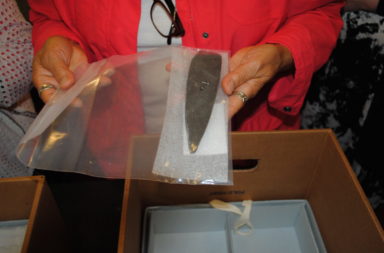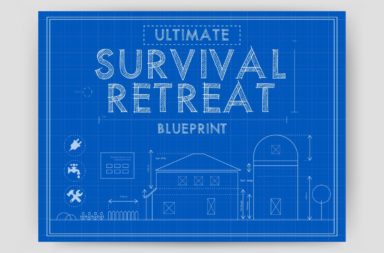Raising hogs for butchering is a simple and cheap way to fill your freezer. Getting a piglet on the cheap and then raising it up to butcher allows you to create a sustainable protein source for your bugin homestead or prepper retreat.
When you raise your own protein, you know the living conditions the hog was kept in, what it was fed, how it was housed, and how it was treated – ensuring the pork raised on your survival retreat will be feeding to your family is healthy.
Cuts of Meat
See featured photo above for reference.
- (A) Ham is from the rear leg and makes cuts of meat such as roast or hams.
- (B) Loin is the most tender part of the animal. The ribs and loin chops are cut from this section of the pig.
- (C) Belly is the fattiest part of the hog. This is where bacon and spareribs are cut.
- (D) Butt is the upper of the front leg. It is a tough cut that is used for stew meats and sausage.
- (E) Picnic shoulder is also a tough cut. It is often smoked or used to make ground sausage.
We use every part of the pig that we can. Our local butcher is great about teaching us the proper way to cut and butcher the pig. He also is a trooper at saving me everything usable.
We get the hock and neck bones smoked for canning for soup beans. I get the lard for self rendering for canning my meats and treating my cast iron. He packs up the liver, if it’s good, for eating, cat fishing, or my dogs. We get the heart, tongue and feet for cooking up for the dogs because they love to eat pig as much as we do.
Best And Most Common Breeds of Market Hogs
There are several breeds of hogs that make for great butchering. These breeds can also be crossed with others and still make for great pigs. Any of these breeds can be registered with the National Swine Registry as long as they meet the required specifications for their markings.
Berkshire
Berkshire a breed that comes from England. Black pig with white feet and tail with some white on the face too.
Duroc
Duroc is an American breed that is all red in color. They grow quickly.
Hampshire
Hampshire is an English breed originally. They are all black with a white belt that encircles their body and covers both front legs. They are a heavy muscled breed.
Yorkshire
Yorkshire is also an English breed. These are all white pigs but they can have some black pigmentation. They are a long body breed.
Tamworth
Tamworth is an English breed. They are all red in color and have a long face and snout. They are a heritage breed.
Poland China
The Poland China breed originated in Ohio. They are a black pig with white feet, tail, and nose and they have droopy ears. They are a lean heavy muscled pig.
Chester White
Chester White is an American breed from Pennsylvania. They are a large pure white pig with droopy ears that cover the eyes. They are good mothers.
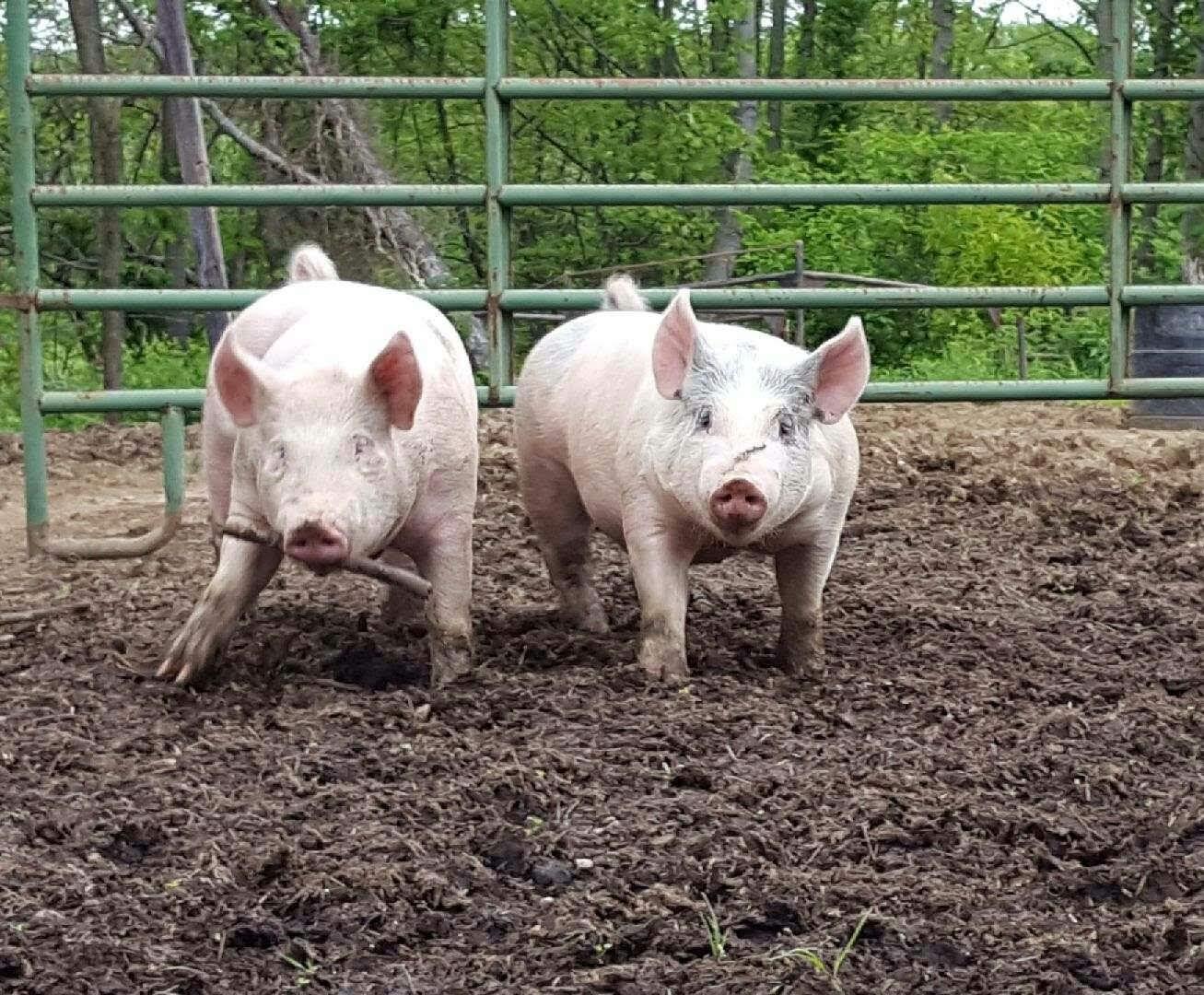
This is a Yorkshire and a York-Cross out for some mud wallerin’ and exercise.
Nutrition and Feeding Hogs
Hogs need to ingest proper nutrients regularly to effectively grow in a short period of time. Nutrients are divided into five groups. Most of the nutrients are provided in the hogs feed.
1. Water
Water is an essential nutrient. If the pig doesn’t have adequate water they won’t eat as they should. A pig needs two to three pounds of water for every pound of feed consumed. Water passes through the body carrying nutrients throughout and removing wastes from the pig.
2. Protein and Amino Acids
Protein and Amino Acids provide the nutrient to build muscle. Proteins are in the feed as animal-by-products, such as milk, meat, bone meal. Oil-bearing seeds, such as, soybean oil and linseed oil. Cereal grains, such as oats, corn, wheat.
3. Carbohydrates and Fats
Carbohydrates and fats are what provides the pig with energy. They are the nutrients that maintain body temperature and muscle movement. Some examples of a carbohydrate is corn, wheat, and sorghum.
4. Minerals
Minerals are needed in body tissues. Calcium, phosphorus, and salt are needed minerals. Calcium is good for bone formation. Phosphorus is needed for energy use and helping to build strong bones. Salt is good for maintaining an appetite and water consumption.
5. Vitamins
Vitamins are necessary to help the body in the use of the other nutrients. There are fat soluble and water soluble vitamins. Fat soluble vitamins are A, D, E, and K and can be stored in the body for a time. Water soluble vitamins must be supplied daily and are the B vitamins.
Of all farm animals the pig is the most likely to be deficient in minerals. This is because the hogs are mainly fed cereal grains which are low in minerals. The minerals also support a greater weight in proportion to their skeletal size. The hogs need the calcium for the bones to form properly.
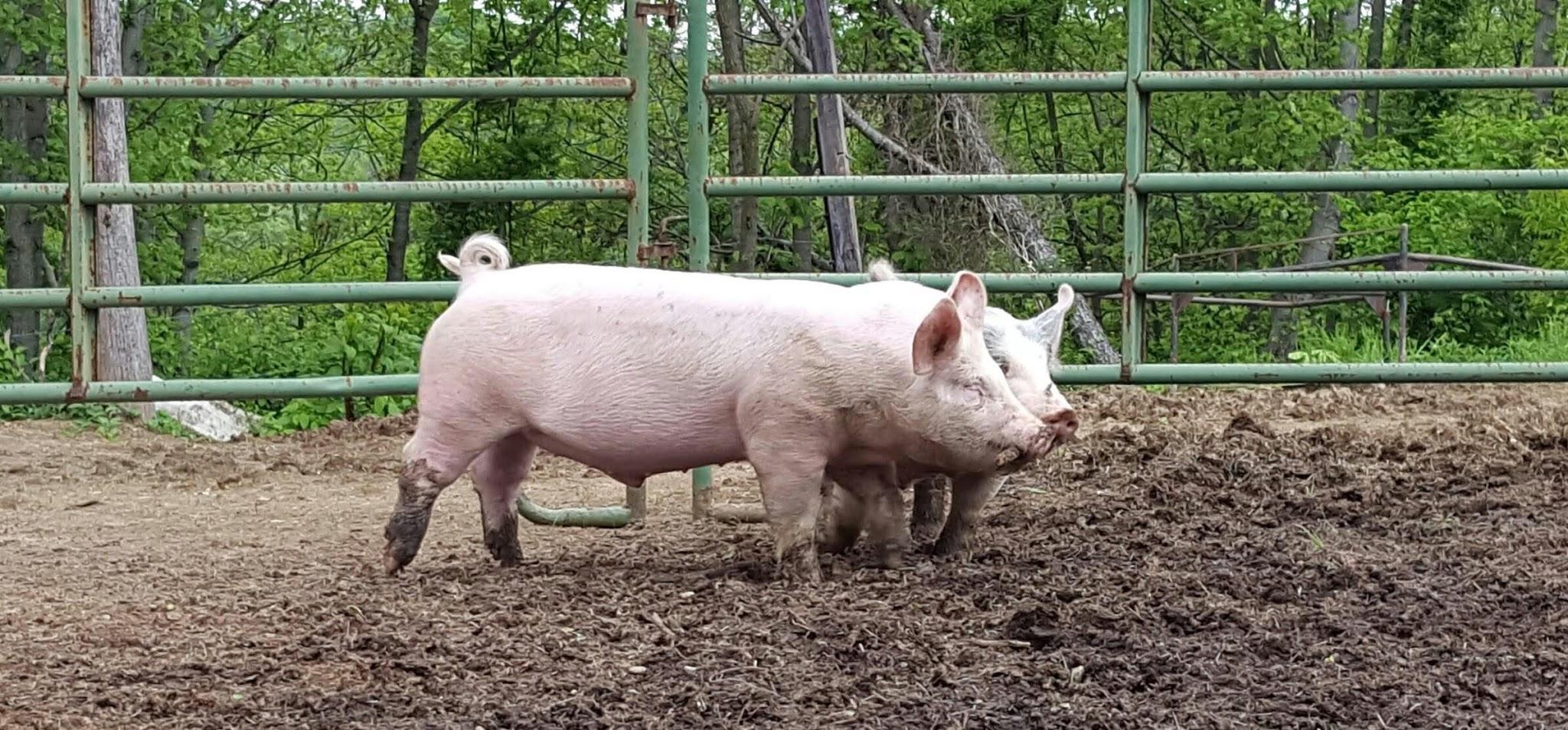
Hogs are fed to grow at a fast rate and to be lean. Roughage is not highly consumed by hogs so they lack the minerals that would be provided by this food source. Most minerals are supplied in purchased supplements.
Hogs also love to eat slops. They will eat about anything you feed them. We keep a gallon bucket in the kitchen and take it out to the pigs everyday. Anything we don’t eat they will or when I clean out the fridge they get a good helping of slops.
Hog Pen
A pig needs adequate space to grow and perform properly. A piglet to 40 pounds (commonly referred to as a ‘weaner’) needs a minimum of three square feet. A market hog of 150 pounds or more needs a minimum of eight square feet. If there is not enough space in the hog pen the animals can grow poorly and will be more apt to start tail biting and cannibalism.
They will also consume more feed and gain less when their pen space is limited. The hog pen should be longer than it is wide because pigs are clean animals and will “toilet train” in one spot away from where they eat or sleep. Pigs will usually poop in a damp spot in the pen.
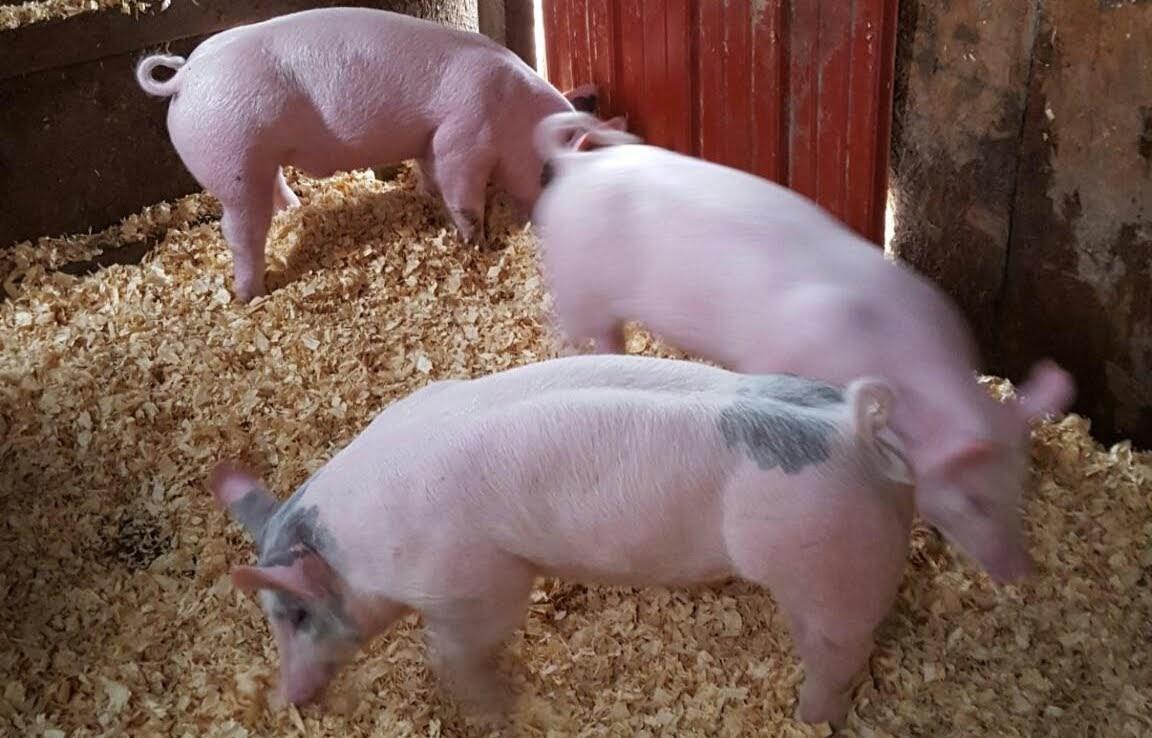
Our pigs live in a covered barn with a fan and wet side for spraying them down. For exercise they get turned out in the mornings and evenings when it is cooler for them to run around and play.
The hogs should have access to feed, water, bedding, and space to exercise and cool down. Pigs can’t sweat so they need a mud hole to waller in and cool off, or at the least a place that has a fan or air flow and the ability to be sprayed. If the hogs are able to be outside of a barn then they will need access to shade.The hog shelter can be a metal shed (although that can get hot in the summer if not well ventilated) a wood shed, or a small wood barn. The pig pen must be cleaned each week to avoid the sounder (a hog herd) from being exposed to potentially lethal parasites. The grazing should be rotated to avoid parasite exposure, as well.
Straw or a similar type of bedding must be placed inside the shelter to help keep the breeder pigs warm over the winter months and to once again, prevent parasite exposure from feed or manure residue.
Hogs are extremely strong. If you do not train your pigs to mind you while you walk them in the yard, sturdy wood or thick metal posts and strong metal fencing, commonly referred to as “hog panels” must be used to create an outdoor area around the living quarters.
The fence posts should be placed only about 10 feet apart to ensure sturdiness. Pigs love to rut and burrow and will try to dig around the fencing.
Pigs are an easy animal to keep. If they are just fed grains it can get costly. That is why it is a good idea to also feed them slops to help with costs and they love it. If the barn is built right and kept clean you wouldn’t even know there were hogs on your farm.

